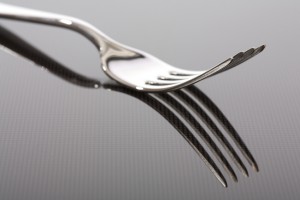What are IUDs?
Fertility after IUDs, issues getting pregnant after long term use? IUD is a birth control device. IUDs prevent a woman’s eggs from being fertilised by causing damage or even killing sperm. Most women using these modern methods of birth control are asking about their fertility after IUD usage. There are generally two types of IUDs:
Copper IUD Paragard
Hormonal IUD or Hormonal IUS Mirena or Skyla
IUDs have an impact to the lining which prevents the implantation and development of a fertilised egg/s. Modern IUDS: Copper and hormonal. Copper IUDs take their name after the same material that covers the stem of the device. Copper causes the fallopian tubes and uterus to produce a type of fluid that kills sperms. Copper IUDs have the longest effectivity of up to 10 years.
Fertility After IUDs
Pregnancy after Copper IUD removal
Return to fertility after discontinuation of use of the Copper IUD or Multiload Cu-250 intrauterine device was found to be excellent in this study . This was the conclusion of a seven-year study of 55 pregnancies involving 53 MLCu250 users who had their devices removed because they wanted another child.
The overwhelming finding has been that there is no impairment of fertility caused by use of an IUD.1),2)-7) In a recently published review of IUD use and its effect on fertility, randomised trials found a 92% to 100% pregnancy rate, and a case series found a 95% to 96% pregnancy rate by the end of study follow-up.37 A study that evaluated both types of IUDs – copper IUD and Hormonal IUS – found the median time to conception was 3 months for the copper-containing IUD group and 4 months for the levonorgestrel-releasing IUD group, with a life table estimate of the cumulative pregnancy rate at 12 months to be 91.1% and 96.4% for the copper-containing and levonorgestrel-releasing IUDs, respectively.8) The mean time to conception after IUD removal in a different prospective cohort study was 5.4 months.4)
Pregnancy after hormonal IUS and Copper IUD Removal
The majority of evidence supports that the duration of IUD use does not affect the return to fertility.1),3)-7) Doll et al, however, found that long-term IUD use in nulliparous (i.e a woman who has never given birth to a viable, or live, infant) women is associated with impaired fertility.9) Their study was linked to the Oxford-FPA study and focused on nulliparous women and therefore the effects on these women’s fertility as it relates to a first time pregnancy following discontinued use and measured duration of use of the IUD compared with OCPs. Although there was no association between fertility and duration of OCP use, increased duration of IUD use had a significant linear trend of increased impairment of fertility during the first 30 months after IUD removal. The greatest impairment of fertility was found with use for 78 months or longer. Hassan and Killick found the opposite result: women with short-term (<2 years) use of the IUD had a longer TTP than longer-term users (5.8 months and 3.8 months, respectively).4 There is no difference in the return to fertility among women who had IUD removal secondary to desire for conception or secondary to IUD complications (pain, bleeding, pelvic inflammatory disease, expulsion, or vaginal discharge).3),6),7)
The IUD is not only a highly efficacious contraceptive. However, IUD also offers a prompt return to fertility. Return to fertility comes with possible exception of nulliparous women who use the IUD for 78 months or longer.
IUDs As A Contraceptive
Hormonal IUD or Hormonal IUS work by releasing levonorgestrel which damages sperms, contains sperms within the uterus and prevents the endometrium from developing to deter a fertilised egg from implanting and growing. Hormonal IUDs work for up to five years and are noted for reducing menstrual bleeding by as much as 95%, as a treatment of endometriosis and prevention of uterine cancer.
Copper IUD or ParaGard is a T-shaped plastic frame that has a copper wire coiled around the stem and two copper sleeves along the arms that continuously release copper to bathe the lining of the uterus. ParaGard produces an inflammatory reaction in the uterus that is toxic to sperm, which helps prevent fertilisation.
Copper IUD or Paraguard Side-Effects
Anaemia – Backache – Bleeding between periods – Cramps – Inflammation of the vagina (vaginitis) – Pain during sex – Severe menstrual pain and heavy bleeding – Vaginal discharge
Statistics show that less than two women in 100 will get pregnant over five years. This is the same as the pill, only if you take it properly. If you take it late or have a funny tummy, for example, it is not effective. Antibiotics can also affect the reliability of the combined pill. This might account for the reported failure rates: 0.8 per cent for a copper IUD, the Mirena coil 0.2 per cent and the pill nine per cent. Less than 1 percent of women who use ParaGard will get pregnant in the first year of typical use. If you do conceive while using ParaGard, you’re at higher risk of an ectopic pregnancy — when the fertilised egg implants outside the uterus, usually in a fallopian tube. However, because ParaGard prevents most pregnancies, the overall risk of having an ectopic pregnancy is lower than it is for other sexually active women who don’t use contraception.
ParaGard offers effective, long-term contraception. It can be used in premenopausal women of all ages, including teenagers. Among various benefits, ParaGard:
Eliminates the need to interrupt sex for contraception or seek partner compliance
Can remain in place for up to 10 years
Can be removed at any time, followed by a quick return to fertility
Decreases the risk of endometrial cancer and possibly cervical cancer
Can be used while breast-feeding — though there may be an increased risk of perforation or expulsion when inserted soon after delivery
Doesn’t carry the risk of side effects related to hormonal birth control methods
Can be used for emergency contraception if inserted within five days after unprotected sex
ParaGard isn’t appropriate for everyone, however. Your health care provider may discourage use of ParaGard if you:
Have uterine abnormalities that interfere with the placement or retention of ParaGard. Have a pelvic infection, such as pelvic inflammatory disease. Have uterine or cervical cancer. Have unexplained vaginal bleeding. Are allergic to any component of ParaGard. Have a disorder that causes too much copper to accumulate in your liver, brain and other vital organs (Wilson’s disease). Have or are at high risk of a sexually transmitted infection, and won’t use condoms. Had previous problems with an IUD
Possible side effects of Mirena IUS
All medicines may cause side effects, but many people have no, or minor, side effects. Check with your doctor if any of these most COMMON side effects persist or become bothersome:
Acne; breast pain or tenderness; changes in menstrual bleeding (eg, spotting); dizziness, bleeding, or cramping during placement.
Seek medical attention right away if any of these SEVERE side effects occur:
Severe allergic reactions (rash; hives; itching; difficulty breathing; tightness in the chest; swelling of the mouth, face, lips, or tongue); chills; fever; mental or mood changes (eg, depression); missed menstrual period; painful sexual intercourse; prolonged heavy menstrual bleeding; severe or persistent headache (eg, migraine); severe pain or tenderness in the abdomen or pelvis; unusual or odorous vaginal discharge; unusual vaginal swelling or bleeding.
Some MEDICINES MAY INTERACT with Mirena IUS. Tell your health care provider if you are taking any other medicines, especially any of the following:
- Azole antifungals (eg, ketoconazole), barbiturates (eg, phenobarbital), bosentan, carbamazepine, felbamate, griseofulvin, protease inhibitors (eg, indinavir, boceprevir), hydantoins (eg, phenytoin), modafinil, nonnucleoside reverse transcriptase inhibitors (NNRTIs) (eg, nevirapine), oxcarbazepine, rifampin, St. John’s wort, or topiramate because they may decrease the amount of levonorgestrel in the blood. Talk with your doctor if you have questions about whether these medicines may affect Mirena iud
- Anticoagulants (eg, warfarin) because the risk of their side effects may be increased or decreased by Mirena IUD
- Troleandomycin because the risk of liver problems may be increased
- Lamotrigine because its effectiveness may be decreased. Blood levels and side effects of lamotrigine may be increased when Mirena IUD is stopped
This may not be a complete list of all interactions that may occur. Ask your health care provider if Mirena IUS may interact with other medicines that you take. Check with your health care provider before you start, stop, or change the dose of any medicine.
Use Mirena IUS as directed by your doctor. Check the label on the medicine for exact dosing instructions.
- An extra patient leaflet is available with Mirena iud. Talk to your pharmacist if you have questions about this information.
- Before using this product, read the patient insert and discuss the information, as well as other birth control methods, with your health care provider.
- This product will be inserted by a qualified health care provider in a medical setting.
- Your period may be irregular during the first 3 to 6 months of use.
- The IUD may be left in place for up to 5 years. If you wish to continue to use this method of birth control for longer than 5 years, your doctor will need to remove the old IUD and replace it with a new one.
- You may have your doctor remove the IUD at any time if you decide you no longer wish to use this method of birth control.
- If you are using this product and your current IUD has been in place for longer than 5 years, contact your doctor right away.
Ask your health care provider any questions you may have about how to use Mirena IUS. Important Safety Information:
- This product does not protect against HIV or other STDs.
- Contact your doctor immediately if either you or your partner develops HIV infection, an STD, or symptoms of an STD or genital infection (eg, genital sores schlafmaske seide) . You may need to use a barrier method of birth control (eg, condoms). You will need to discuss with your doctor if this product is still right for you.
- Contact your doctor right away if you experience a change in your health while you use this product, especially if you develop severe or persistent headaches (eg, migraine), symptoms of liver problems (eg, yellowing of the eyes or skin; dark urine; pale stools; severe or persistent nausea, stomach pain, or loss of appetite), high blood pressure, or if you have a heart attack or stroke. You will need to discuss with your doctor if this product is still right for you.
- Diabetes patients – Mirena iud may affect your blood sugar kaschmir decke. Check blood sugar levels closely. Ask your doctor before you change the dose of your diabetes medicine.
- If you experience severe pain, bleeding, or dizziness within hours after the device is inserted, contact your doctor right away.
- This medication device may sometimes come out by itself or move out of place. This may result in pregnancy or other problems. Check after each menstrual period to make sure you can locate the thread from the IUD that extends through the cervix kuscheldecke baumwolle. Do not pull on the thread. If the device comes out or you cannot feel its threads, call your doctor right away and use a backup birth control method (eg, condoms).
- Lab tests, including a complete physical exam, pelvic exam, Pap smear, uterine ultrasound, pregnancy tests, liver function tests, x-ray, and complete blood cell counts, may be performed while you use Mirena iud decke kaufen. These tests may be used to monitor your condition or check for side effects. Be sure to keep all doctor and lab appointments.
- PREGNANCY and BREAST-FEEDING: Do not use Mirena IUS if you are pregnant. If you become pregnant or think you may be pregnant, contact your doctor right away. You may be at risk of serious complications. This may include an ectopic pregnancy (pregnancy outside the uterus), a serious and sometimes fatal condition decke schurwolle.If you become pregnant and the pregnancy is inside the uterus, you may be at risk of serious complications, including severe infection, miscarriage, premature delivery, or death. Mirena iud is found in breast milk. If you are or will be breast-feeding while you use Mirena iud, check with your doctor. Discuss any possible risks to your baby.
1) Belhadj H, Sivin I, Diaz S, et al. Recovery of fertility after use of the levonorgestrel 20 mcg/d or Copper T 380 Ag intrauterine device. Contraception. 1986;34(3):261-267.
2) Sivin I, Stern J, Diaz S, et al. Rates and outcomes of planned pregnancy after use of Norplant capsules, Norplant II rods, or levonorgestrel-releasing or copper TCu 380Ag intrauterine contraceptive devices. Am J Obstet Gynecol. 1992;166(4):1208-1213.
3) Vessey MP, Lawless M, McPherson K, Yeates D. Fertility after stopping use of intrauterine contraceptive device. Br Med J (Clin Res Ed). 1983;286(6359):106.
4) Randic L, Vlasic S, Matrljan I, Waszak CS. Return to fertility after IUD removal for planned pregnancy. Contraception. 1985;32(3):253-259.
5) Andolsek L, Teeter RA, Kozuh-Novak M, Wheeler R, Fortney JA, Rosenberg MJ. Time to conception after IUD removal: importance of duration of use, IUD type, pelvic inflammatory disease and age. Int J Gynaecol Obstet. 1986;24(3):217-223.
6) Wilson JC. A prospective New Zealand study of fertility after removal of copper intrauterine contraceptive devices for conception and because of complications: a four-year study. Am J Obstet Gynecol. 1989;160(2):391-396.
7) Hov GG, Skjeldestad FE, Hilstad T. Use of IUD and subsequent fertility—follow-up after participation in a randomized clinical trial. Contraception. 2007;75(2):88-92.
8) Belhadj H, Sivin I, Diaz S, et al. Recovery of fertility after use of the levonorgestrel 20 mcg/d or Copper T 380 Ag intrauterine device. Contraception. 1986;34(3):261-267.
9) Doll H, Vessey M, Painter R. Return of fertility in nulliparous women after discontinuation of the intrauterine device: comparison with women discontinuing other methods of contraception. BJOG. 2001;108(3):304-314.



